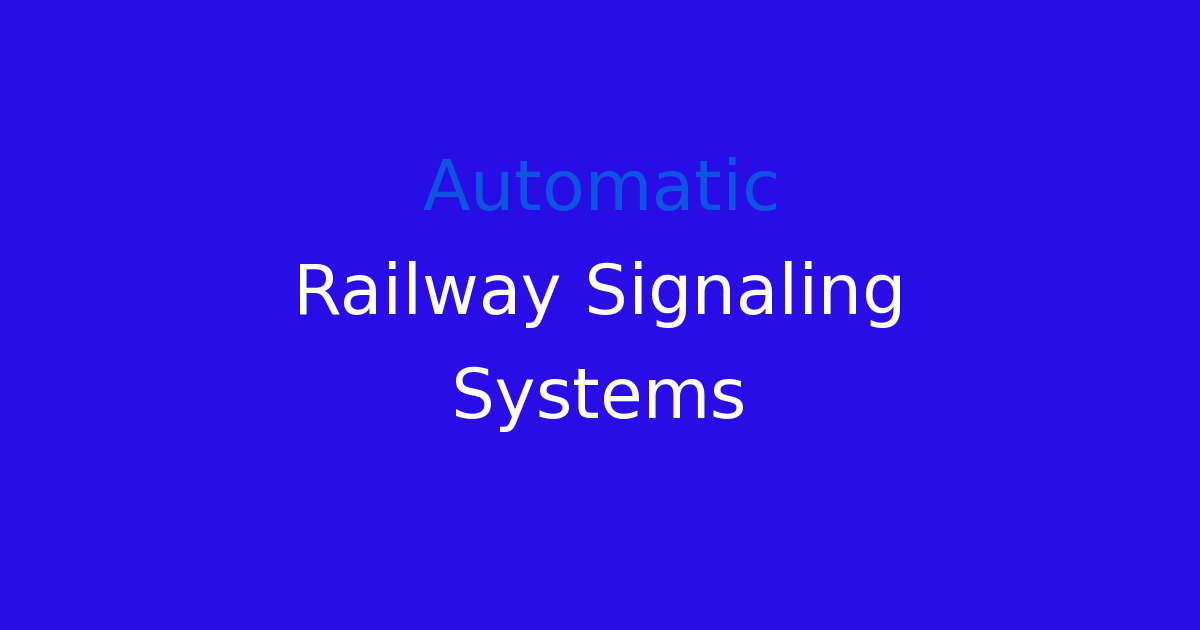Automated railway signaling systems.
Automatic Railway Signaling Systems
Introduction
Automatic railway signaling systems are crucial for the safe and efficient operation of trains. These systems help in preventing collisions between trains, ensuring smooth operations, and enhancing the overall safety of railway networks. In this project, we will be looking at the existing signaling systems in Indian railways, identifying their drawbacks, and proposing a new and improved system to overcome these challenges.
Problem Statement
The existing signaling systems in Indian railways are outdated and inadequate to handle the increasing traffic and demands of modern railway operations. Manual signaling systems are prone to human errors, delays, and inefficiencies, leading to potential safety hazards and operational disruptions. It is imperative to upgrade the signaling systems to ensure the safety of passengers and the smooth functioning of the railway network.
Existing System
The existing signaling system in Indian railways relies heavily on manual operations, where signalmen are stationed at various points along the tracks to control the movement of trains. This system is labor-intensive, error-prone, and lacks the flexibility to respond quickly to changing conditions. Additionally, the reliance on manual operations makes it challenging to monitor and track trains in real-time, leading to delays and inefficiencies.
Disadvantages
Some of the disadvantages of the existing signaling system in Indian railways include:
- Prone to human errors
- Lack of real-time monitoring
- Slow response to changing conditions
- Inefficient use of resources
- Potential safety hazards
Proposed System
Our proposed system aims to address the shortcomings of the existing signaling system by implementing an automatic railway signaling system. This system will be equipped with sensors, actuators, and communication devices to monitor train movements, detect obstacles, and facilitate automated signaling. By leveraging advanced technologies such as artificial intelligence and machine learning, our system will be able to make real-time decisions, optimize train schedules, and ensure the safety of railway operations.
Advantages
Some of the advantages of our proposed automatic railway signaling system include:
- Improved safety
- Enhanced efficiency
- Real-time monitoring
- Optimized train schedules
- Reduced human errors
Features
Our automatic railway signaling system will be equipped with the following features:
- Sensor-based train detection
- Automated signaling and control
- Real-time communication
- AI-based decision-making
- Centralized monitoring and control
By incorporating these features, our system will revolutionize the way signaling is done in Indian railways, paving the way for a safer, more efficient, and technologically advanced railway network.
Conclusion
In conclusion, the implementation of an automatic railway signaling system is essential for the modernization and enhancement of Indian railways. By upgrading the existing signaling systems with advanced technologies, we can address the shortcomings of manual operations, improve safety, and optimize train schedules. Our proposed system offers a comprehensive solution to the challenges faced by the existing signaling systems, setting a new standard for railway operations in India.

